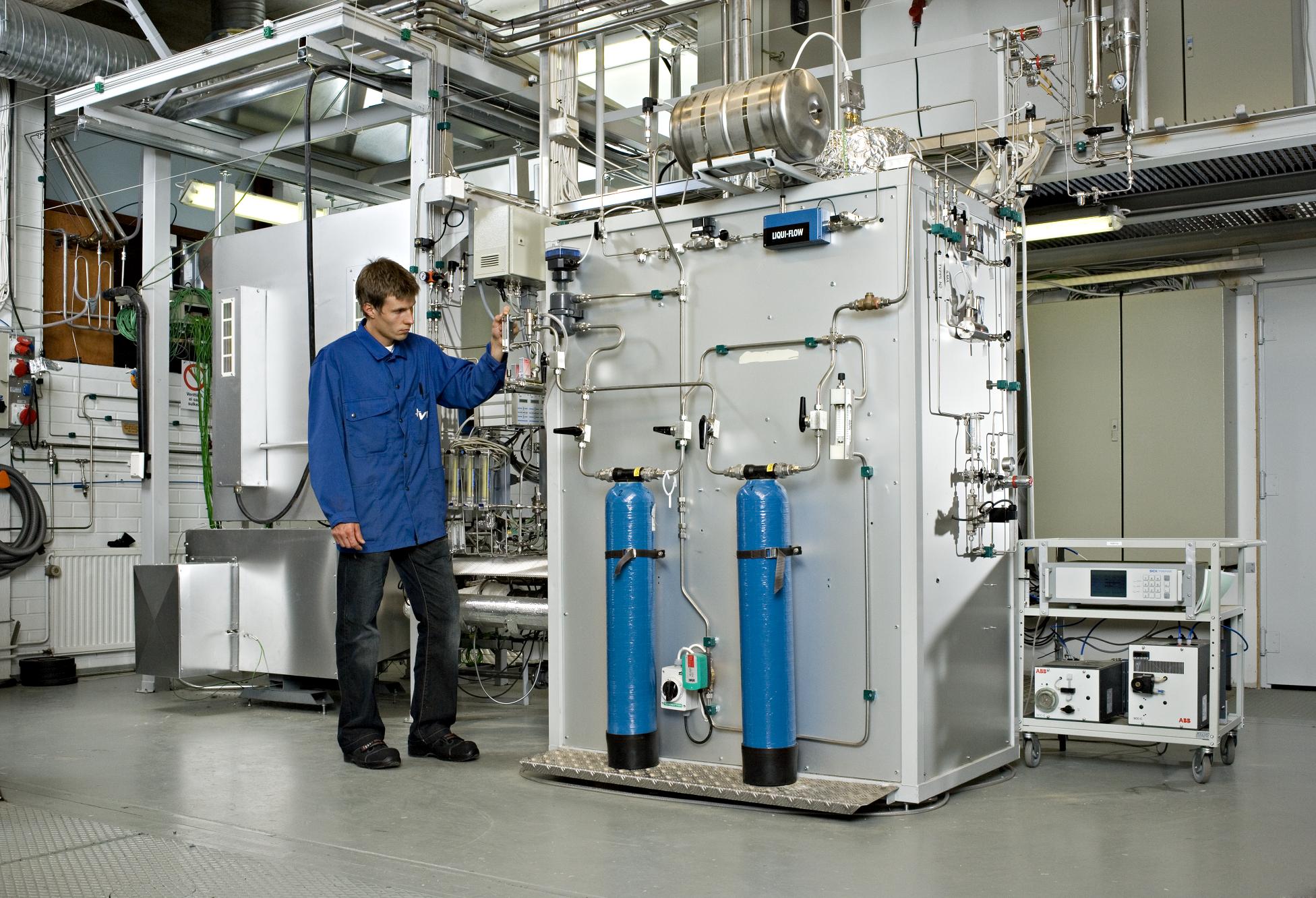
Solid Oxide Fuel Cells
Apros provides a versatile platform for high-temperature solid oxide fuel cell (SOFC) system simulation. The modelling of processes, automation systems and power conditioning are readily included in Apros. While the Combustion and Automation model libraries of Apros provide a strong basis for SOFC system modelling, there has been a need to develop and add models to suit the specific needs of SOFC systems for modelling e.g. fuel reformers for natural gas, catalytic burners, ejectors, sulphur removal units, power conversion and the solid oxide fuel cell planar stack models. This development has been going on since 2004.
SOFC systems operate at high-temperatures up to 800 °C and beyond. Therefore, e.g. thermal management issues with heat losses to the environment and between system components play an important role in the design of these systems. The component models of Apros are accurate enough while also being fast enough to operate system models in real-time with standard PCs and laptop computers.
Apros has been used for solid oxide system component and system-level modelling in national demonstration projects and in EU-funded projects (LARGE-SOFC, FP6) where the simulation results from process-level models have been compared to actual SOFC units at good accuracy and speeds up to 20 times faster than real-time in standard computers. Additionally, Apros has been used for the testing of control hardware where the actual system has been replaced by an Apros SOFC system model. In this way, the automation hardware can be tested prior to installation of the actual system.

Single solid oxide fuel cells.

5 kWe SOFC demonstration unit at VTT. The unit was operated for 7000 h with a 5 kW planar SOFC stack in a national project that ended in 2007.
Publications
- Dynamic model of 5 kW SOFC CHP Test Station
Saarinen, Jaakko; Halinen, Matias; Noponen, Matti; Ylijoki, Jukka; Kiviaho, Jari
Journal of Fuel Cell Science and Technology, November 2007, Vol. 4, Issue 4, pp. 397-405 - Steady-state simulation study of thermal management of planar SOFC stack
Saarinen, Jaakko; Halinen, Matias; Gubner, Andreas; Noponen, Matti; Ylijoki, Jukka; Froning, Dieter; Kind, Andrea; Kiviaho, Jari
2006 Fuel Cell Seminar Abstracts for Oral and Poster Presentations. Honolulu, Hawaii, USA, 13-17 Nov. 2006. Conference CD (2006) - Dynamic Co-Simulation of a Solid Oxide Fuel Cell (SOFC) and the Balance of Plant (BoP) by Combining an SOFC Model with the BoP-Modelling Tool Apros
Gubner, Andreas; Saarinen, Jaakko; Ylijoki, Jukka; Froning, Dieter; Kind, Andrea; Halinen, Matias; Noponen, Matti; Kiviaho, Jari
Lucerne Fuel Cell Forum 2006 (EFCF 2006). Lucerne, Switzerland, 3-7 July 2006. Conference CD. European Fuel Cell Forum (2006) - Dynamic Simulation Tool Apros in SOFC Power Plant Modelling at Wärtsilä and VTT
Ollikainen, Toni; Saarinen, Jaakko; Halinen, Matias; Hottinen, Tero; Noponen, Matti; Fontell, Erkko; Kiviaho, Jari
ECS Transactions. Vol. 7 (2007) No: 1, 1821-1829
